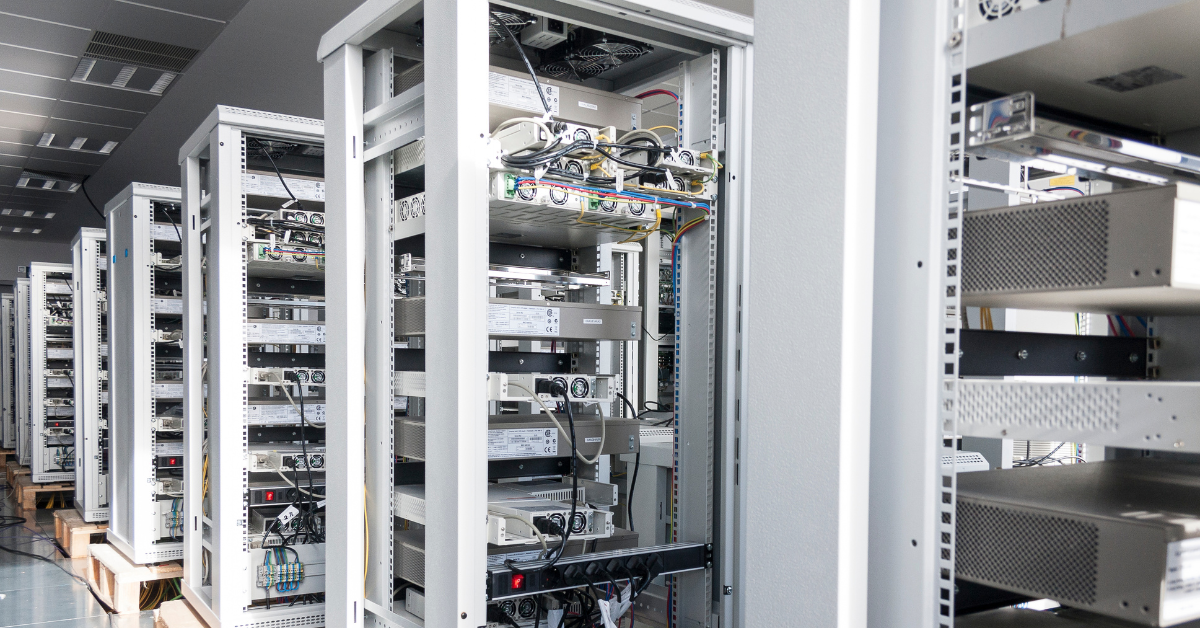If you’re looking for data storage solutions beyond the cloud, chances are you’ve spent some time wading around in the sea of data center terminology. But unless you identify as an IT geek, you may be wondering what all these terms mean. It doesn’t help that half the time, people throw around seemingly meaningless acronyms rather than speaking plain English.
That’s why we’ve put together a glossary of sorts to help the layperson make sense of it all. Our hope is that if you understand the lingo, you will have a better idea of what you’re looking for when it comes to choosing the right data center solution for your storage needs.
The following is our top 10 list of most common data storage terms:
Uptime –
A data center’s uptime is the amount of time per year that the center is able to guarantee that it will be available. Of course, in a perfect world, any center should be 100% available at all times, but this would be impossible to guarantee. However, any center will be able to guarantee an uptime of anywhere from 99.671% to 99.995%.
Colocation (aka ‘Colo’) –
This term is often used as both a noun and a verb, and because of that you may hear it in somewhat different contexts. But in general, colo refers to a type of data center that hosts servers and other equipment from many different companies, rather than just one. Companies act as tenants with the space, and are therefore ‘co-located’ within the same space.
A company can also decide to colo (note its use as a verb) by opting to house their data in several different locations. Having servers scattered between various strategic points on the map can be advantageous for organizations with a larger geographic footprint.
Uninterruptible Power Source (UPS) –
Not to be confused with the courier service, in the IT world, UPS refers to a battery backup power source that is used to ensure that there is never an interruption in power, even in the event of an outage. This is not the same as a backup generator. It generally won’t keep things running for more than a half hour or so, but it does provide enough time to let the generators fire up so that there is no loss of data from a hard restart.
Redundancy –
Data redundancy is the practice of deliberately storing identical data in more than one location so that business operations can continue even if some data is lost or corrupted. While this practice definitely has its advantages, one drawback is that it has the potential to increase discrepancies.
Internet Service Provider (ISP) –
An ISP is a company that connects customers to the internet via a direct line. Think Comcast or AT&T. Many ISPs own their own data center, or they maintain a hosting facility within a larger data center.
Rack Unit (RU) –
An RU is a unit of measurement equal to 1.75 inches, used to measure the dimensions of a server unit. Knowing a unit’s RU helps determine how it will fit with the other units within a server rack.
Intrusion Detection System (IDS) –
The IDS serves as a virtual watchdog, monitoring all data center activities for signs of intrusion or unauthorized activity. It is programmed to alert the administrators or management when anything unusual is detected.
Power Usage Effectiveness (PUE) –
PUE is a ratio that expresses how energy efficient a particular data facility is. Specifically, it communicates power in vs. power utilized. The ideal ratio would be 1, but most centers achieve anywhere from 1.2-1.4. A PUE of 1.5 or more would be cause to start seeking ways to conserve energy.
Mantrap –
A mantrap is an extra physical layer of security that prevents unauthorized individuals from entering the data center. It serves as an airlock of sorts, a small room that has a door on either side, one from an unsecured area, and another that leads to a secure area that requires a scan or other feature in order to open. The room is small enough that it won’t permit more than one person through at a time.
Tiers –
Data centers utilize a ranking system to classify the level of infrastructure reliability that customers can expect. Some of the criteria that determine tier qualifications are uptime, fault tolerance and availability. The levels ascend from 1 to 4, with a tier 1 center being the most basic type of facility, and a 4 representing close to the highest possible industry standard for reliability and continuous support.
There are lots more terms to become familiar with in the data center world, but hopefully we’ve helped you to become more familiar with the lingo.
